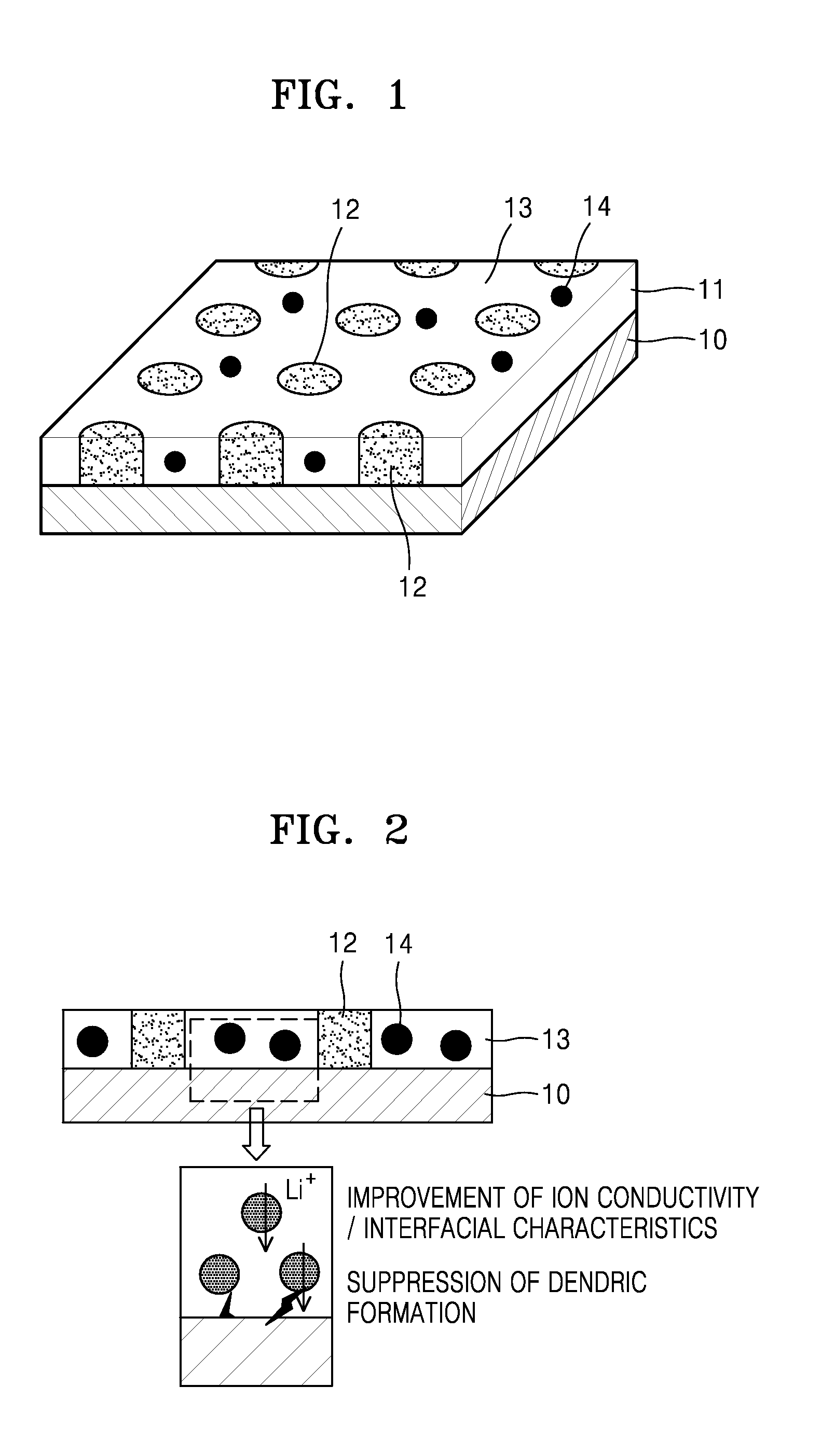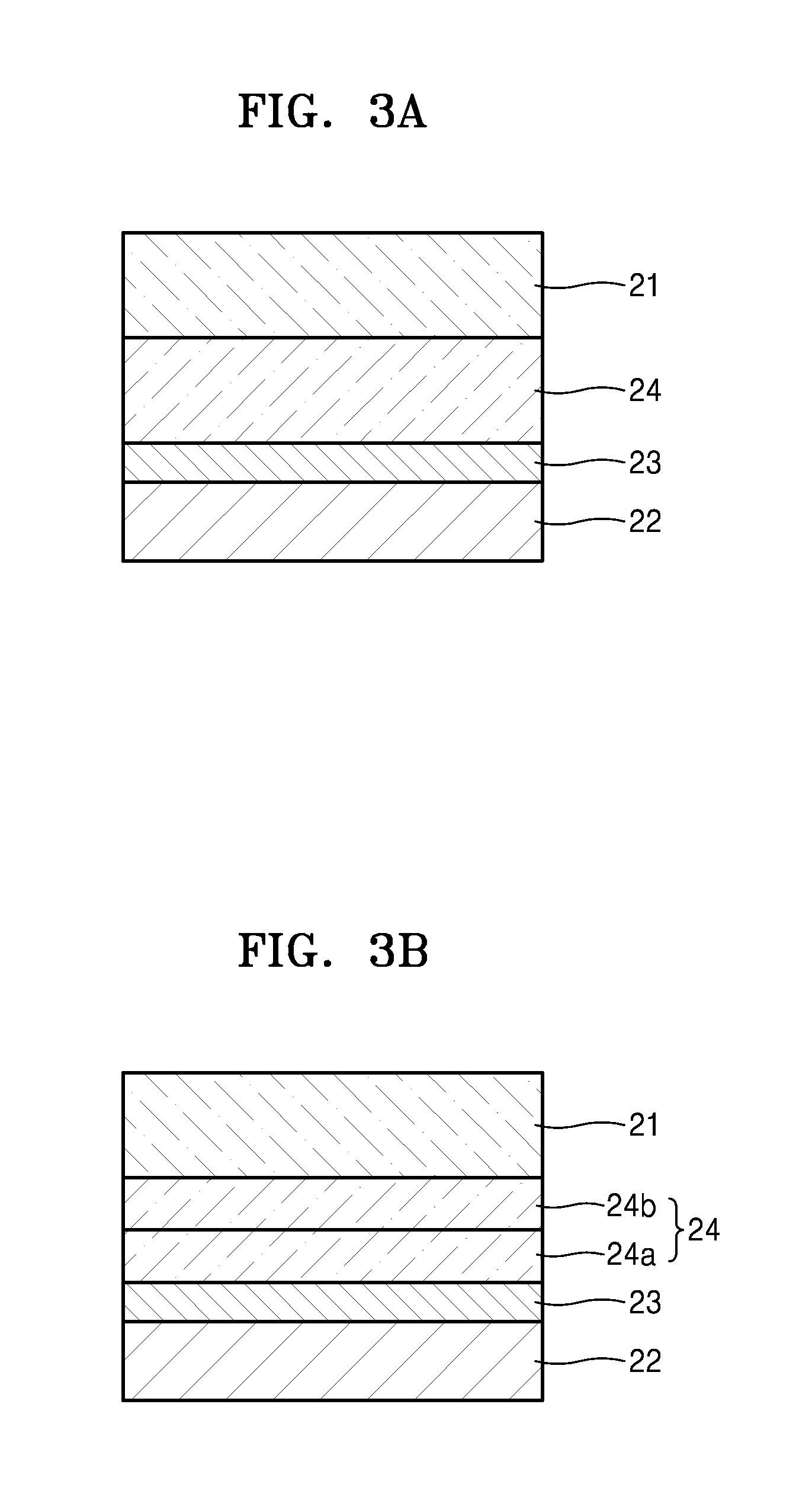Electrolyte composite and negative electrode and lithium second battery including the electrolyte composite
a technology of negative electrodes and electrolyte composites, which is applied in the direction of batteries, cell components, electrochemical generators, etc., can solve the problems of dendritic formation on negative electrodes, lithium secondary batteries including such a lithium metal thin films, etc., and achieve good interfacial characteristics and improve ion conductivity and mechanical properties.
- Summary
- Abstract
- Description
- Claims
- Application Information
AI Technical Summary
Benefits of technology
Problems solved by technology
Method used
Image
Examples
manufacturing example 1
Preparation of Lithium Secondary Battery
[0277]A coating of the electrolyte composition of Example 1 having a thickness of about 5 μm was applied to a lithium metal thin film (having a thickness of about 20 μm) by using a doctor blade. Then, the resulting product was dried at a temperature of about 25° C. and thermally treated under vacuum at a temperature of about 40° C., so as to manufacture a lithium metal negative electrode including an electrolyte coated thereon.
[0278]Separately, LiCoO2, a conducting agent (Super-P, available from Timcal Ltd.), polyvinylidene fluoride (PVdF), and N-pyrrolidone (NMP) were mixed together to obtain a positive electrode composition. Here, a mixed weight ratio of LiCoO2, the conducting agent, and PVdF in the positive electrode composition was about 97:1.5:1.
[0279]A coating of the positive electrode composition was applied to an aluminum foil (having a thickness of about 15 μm). The resulting product was dried at a temperature of about 25° C., and the...
example 1
Reference Manufacturing Example 1
Preparation of Lithium Secondary Battery
[0282]LiCoO2, a conducting agent (Super-P, available from Timcal Ltd.), PVdF, and NMP were mixed together to obtain a positive electrode composition. Here, a mixed weight ratio of LiCoO2, the conducting agent, and PVdF in the positive electrode composition was about 97:1.5:1.5.
[0283]A coating of the positive electrode composition was applied to an aluminum foil (having a thickness of about 15 μm). The resulting product was dried at a temperature of about 25° C., and then was dried under vacuum at a temperature of about 110° C., so as to manufacture a positive electrode.
[0284]A lithium secondary battery was manufactured using a polypropylene separator (Cellgard 3510) and a liquid electrolyte between the positive electrode and the lithium metal negative electrode (having a thickness of about 20 μm). The liquid electrolyte used herein was obtained by dissolving 1.3 M LiPF6 in a mixed solvent of DEC and FEC having ...
PUM
| Property | Measurement | Unit |
|---|---|---|
| ion conductivity | aaaaa | aaaaa |
| weight average molecular weight | aaaaa | aaaaa |
| weight average molecular weight | aaaaa | aaaaa |
Abstract
Description
Claims
Application Information
 Login to View More
Login to View More - R&D
- Intellectual Property
- Life Sciences
- Materials
- Tech Scout
- Unparalleled Data Quality
- Higher Quality Content
- 60% Fewer Hallucinations
Browse by: Latest US Patents, China's latest patents, Technical Efficacy Thesaurus, Application Domain, Technology Topic, Popular Technical Reports.
© 2025 PatSnap. All rights reserved.Legal|Privacy policy|Modern Slavery Act Transparency Statement|Sitemap|About US| Contact US: help@patsnap.com



